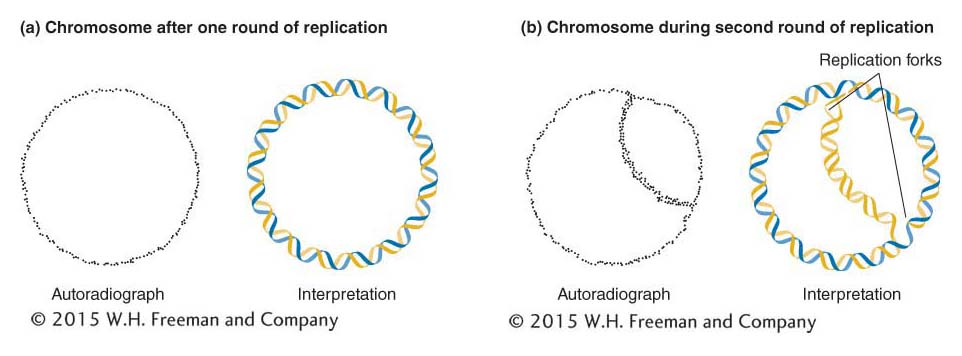A replicating bacterial chromosome

Figure 7-14: A replicating bacterial chromosome has two replication forks. (a) Left: Autoradiograph of a bacterial chromosome after one replication in tritiated thymidine. According to the semiconservative model of replication, one of the two strands should be radioactive. Right: Interpretation of the autoradiograph. The gold helix represents the tritiated strand. (b) Left: Autoradiograph of a bacterial chromosome in the second round of replication in tritiated (3H) thymidine. In this molecule, the newly replicated double helix that crosses the circle could consist of two radioactive strands (if the parental strand were the radioactive one). Right: The double thickness of the radioactive tracing on the autoradiogram appears to confirm the interpretation shown here.
[Leave] [Close]